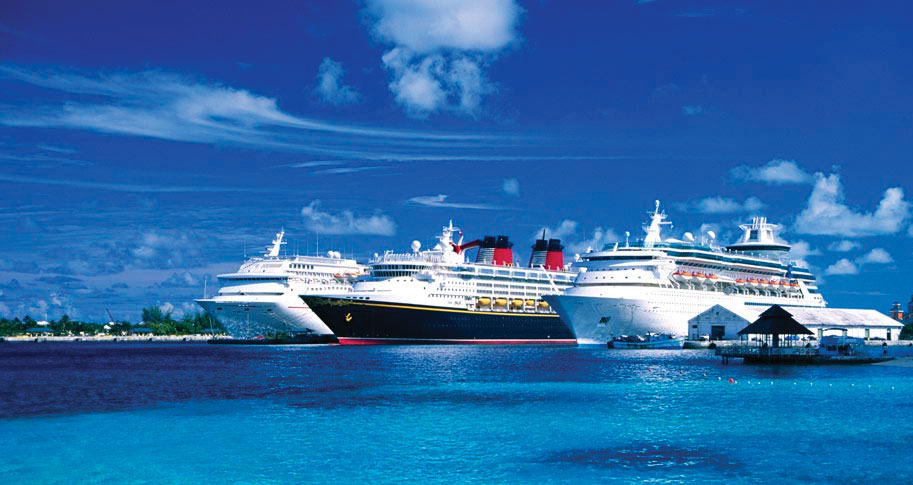Data-Driven Price Discrimination: A Lifeline for the Cruise Industry

February 5, 2021 | By Ryan Decker
Researchers: Dinesh K. Gauri
Few industries suffered more than leisure cruises during the pandemic. Official no-sail orders from the CDC shut down all sailings from mid-March until the end of October, and U.S. cruise operators burn through hundreds of millions of dollars in cash every month their fleets sit idle. Cruise ships must begin with “mock cruises” to ensure proper health and safety measures before they can bring on passengers – contributing to already immense costs.
As if that wasn’t enough, a swirl of bad publicity has portrayed cruise ships as deadly incubators of disease. Although some restrictions have been lifted, many still wonder if travelers ever want to sail again. I was horrified by the story of the Diamond Princess, a luxury cruise ship that became a floating epidemiological disaster in February 2020. Ineffective containment measures and a lack of resources led to 634 infections and two deaths. Even so, when I was in New Orleans last March, I talked to two travelers who couldn’t wait to board their Caribbean cruise that afternoon. Will cruise-goers quickly take to the seas again, or will they balk at the possibility of a quarantine in a glamorous prison?
The possibility of lower demand has many cruise companies wondering how they will regain their losses. In their paper, “Improving revenue performance with third-degree price discrimination in the cruise industry,” Aidin Namin, Dinesh Gauri and Robert Kwortnik offer a solution. They discuss the importance of innovative approaches to pricing and demand management, namely using Big Data and analytics to fuel price discrimination strategies and maximize revenue in times of uncertainty.
The authors highlight market factors that make the cruise industry even more complicated. There is a major concern of oversupply, as cruise lines increased the sizes of their fleets right before the pandemic hit. There is also surprisingly low demand and pricing in East Asian markets, which has caused companies to move to more competitive markets. Finally, cruise companies are turning to repeat customers to drive revenue due to a declining growth rate of new cruisers. Attracting the right customers at the right time is essential to the success of major cruise operators.
“Cruise lines and other yield-driven travel and hospitality businesses often succeed or fail at the margins,” the authors write. “Yielding a few extra dollars from the right customers at the right time, when multiplied across millions of customers and dozens or hundreds of products, can produce incremental revenue that translates to significant profits – especially for high fixed-cost operations.” As cruise lines attempt to recover lost profits, data-driven price discrimination strategies may be the lifeline the struggling cruise industry needs.
A Special Price Just for You
Most cruise lines open reservations up to two years before the scheduled departure date, and cruise companies recommend booking at least six to 12 months ahead of time. Since sales occur so early, cruise operators must be able to accurately analyze price sensitivity and adjust prices to reduce demand uncertainty and collect more revenue.
Revenue management, or using “pricing methods, models, and approaches used by the seller to improve revenue via determining groups of customers served at different price levels” is widely used in the hospitality industry. The authors suggest that revenue management “should go beyond just variations of price over periods of time” and instead, “prices should be planned and tailored at the level of each individual buyer or buyer segment.” More specifically, this practice of pricing products at various levels is called price discrimination. Companies use three types of price discrimination strategies to manage revenue.
- First-Degree Price Discrimination
This occurs when a company charges the highest possible price for each unit sold. For example, think of an airline trying to fill up a flight. Airlines will usually offer cheaper tickets several months in advance but raise prices as the flight fills up. If they have last-minute vacancies, the airline may lower the price to capture as much consumer surplus as they can. The price changes for each seat sold, not the customer who buys it.
- Second-Degree Price Discrimination
This occurs when a company charges a different price for different quantities purchased. Think of bulk discounts from warehouse clubs or variations of price for different sizes of French fries from McDonald’s.
- Third-Degree Price Discrimination
This occurs when a company charges a different price to different consumers or consumer groups. For example, movie theaters and restaurants have different prices for seniors, adults and children. For e-commerce sales, some companies started to charge consumers more based on their ZIP code or what type of computer they use.
Is It Ethical?
Many people consider price discrimination unfair, but economists argue that it benefits both parties. “The literature on third-degree price discrimination generally shows that the practice can benefit both the customer and the firm when existing regulations are in place,” the authors write. Price discrimination is rarely unlawful, violating federal antitrust law only when it threatens to undermine competition in the market and meets specific statutes. Legal price discrimination offers an attractive way for marketing managers to estimate demand and improve revenue performance.
The growth of Big Data and advanced analytics introduces exciting opportunities as well as new ethical concerns. To effectively implement third-degree price discrimination in the cruise industry, marketing professionals increasingly rely on data scientists to identify and target different customer segments.
While price discrimination research has been applied to the service industry, the literature has not yet applied third-degree price discrimination to a complex travel product like cruises. The authors develop a model of demand for cruises and the offered amenities, using consumer characteristics to control for unobserved differences. This sets the foundation for third-degree price discrimination and helps the seller predict the consumer’s willingness to pay, in turn increasing revenue. The authors analyze data of Caribbean cruises leaving from Florida from one of the leading cruise lines in the United States in their model.
Pricing it Right
The authors’ pricing model predicts how likely customers are to select various cruise options and at what price based on their characteristics. They include options such as cabin type (ocean-view, suite, balcony and upper/lower), port, itinerary and time between purchase and departure in the model. The authors also use demographic characteristics such as median household income, distance from departure location, age, gender and marital status to break customers into groups.
Through their analysis, the authors found that there were two main cruise customer segments. One group consisted of single, female, younger travelers and those who lived farther from cruise departure locations, while the other consisted of married, male, older travelers and those who lived closer to cruise departure locations. Interestingly, household income was not significant in determining a customer’s segment membership. By separating these customer groups, the authors uncovered purchasing patterns that could guide pricing policies. The first group delayed their purchases in hopes of getting a better price later, even though some research has shown this rarely occurs, while the second group also delayed their purchases and ended up paying higher prices.
Putting the Model to the Test
The authors recommend shallow discounts of less than 20% for both segments, as these have the best outcomes in terms of the seller’s revenue for seasonal products. From their analysis, applying these discounts results in a 4.33% increase in revenue for the first group and a 4.76% increase in revenue for the second group. This result is consistent with previous studies that predicted a 5% revenue increase for seasonal experiential goods using third-degree price discrimination.
One strategy helps cruise companies “lock in demand for this group who might otherwise delay their purchases in the hopes of getting a better price later,” and “motivate earlier purchase of higher-tier and/or more expensive cabin types, potentially generating a sense of ‘out-of-stock’ urgency for other buyers.” For some customers, such as those in group one, a discount might help the cruise company lock in revenue early in the sales window.
Implementing the same discount would help “[balance] the traditional top-down booking of different cabin types” by encouraging customers, such as those in the second group, to lock in their purchases earlier. Expensive cabins usually sell out first, so this strategy increases demand for lower-tier cabin types earlier – reducing supply for later bookers who then have to pay more for scarce products.
Not only does this price-discrimination model help managers make informed decisions and collect additional revenue, but the authors find that “excluding third-degree price discrimination can produce an inaccurate picture of the market and of factors that affect demand/sales, with consequent negative effects on pricing and demand-management decisions.” Third-degree price discrimination models like this one help cruise lines make informed decisions and improve revenue performance.
In this first-of-its-kind study, the authors employ advanced data analysis techniques to identify hidden segments of consumers and understand how they make purchase decisions. “The benefit of the data-driven modeling approach advocated [in this study] is that it puts business intelligence behind the practice of third-degree price discrimination.” Harnessing the power of customer data and offering tailored prices to consumer groups improves revenue compared with a “one-size fits all” pricing strategy. Data-driven price discrimination strategies offer exciting opportunities for cruise companies to rebound from the disastrous effects of the pandemic.
Rising from the Ashes
The cruise industry isn’t alone in their struggle with the pandemic. As businesses adjust to the “new normal,” they must also look to the “next normal.” Outside of pricing, successful companies are using advanced analytics to understand consumer behavior and unlock new revenue potential. Whether that looks like digitizing sales, creating flexible payment terms, or automating processes using robotic process automation, companies large and small should prioritize their ability to move quickly to rebound from the crisis. No matter the industry, the use of data analytics and business intelligence is vital to rise from the ashes.
Data-driven pricing strategies for understanding how much consumers will pay for products and services can yield impressive results. One study found that web behavior data can help predict how much a consumer would be willing to pay for a Netflix subscription. Charging customers different prices based on their willingness to pay could increase company profits by 1.4%. Other companies like Starbucks have already embraced variable pricing strategies. A grande latte costs over a dollar more in China than in the U.S. because Chinese consumers see Starbucks as an upscale product and are thus willing to pay more for it.
Data-driven pricing and analytics strategies are on the rise and offer promising outcomes for many companies. Understanding how consumers value a company’s products or services is essential in improving revenue and bringing in new customers. Data analytics and business intelligence will continue their rise because they help companies do just that.


